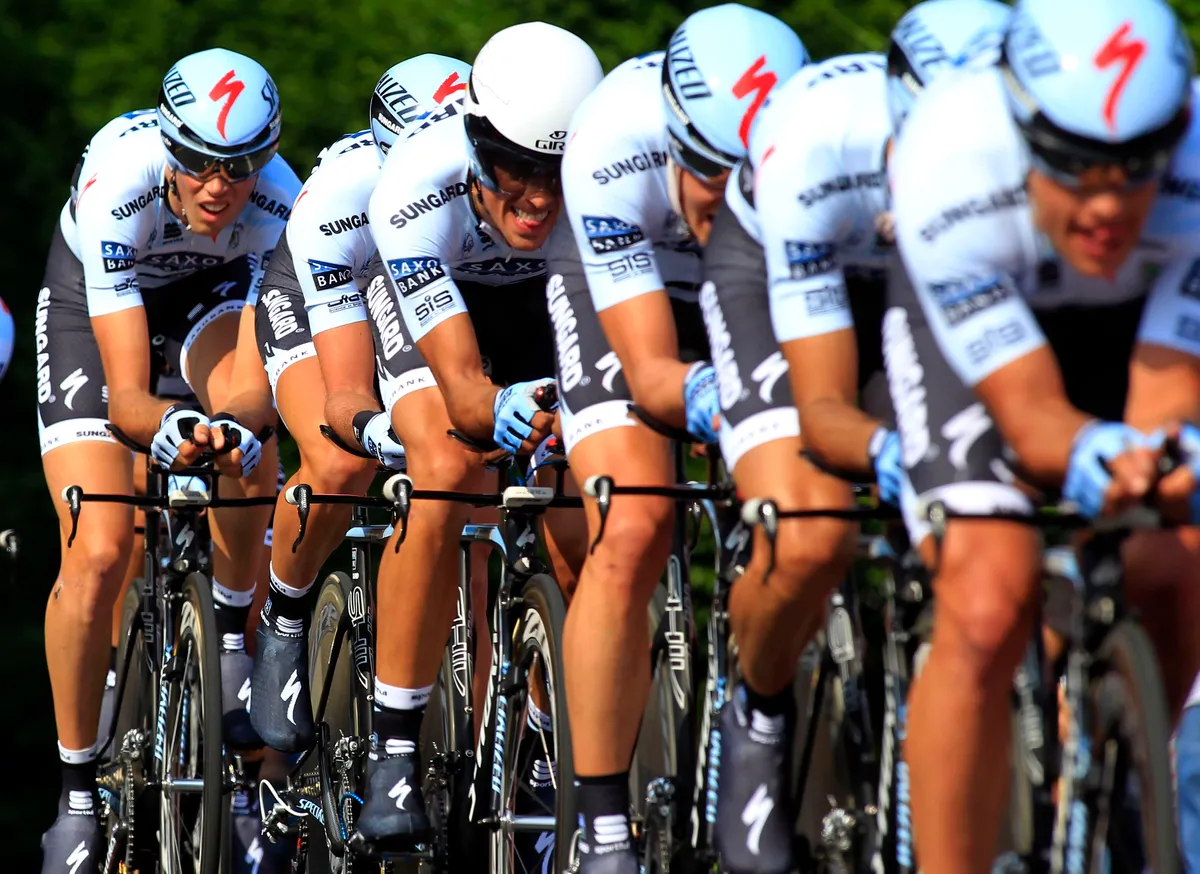A great team time trial is a stern test of aerodynamic equipment and individual fitness, but the true beauty of nine riders scything through the air in unison is the collaboration and coordination of an entire team.
This fiercely fought battle in the season-long war between teams is crucial to gaining results and exposure for sponsors because it is cycling’s ultimate test of leadership and preparedness.
The spectacle and speed of the TTT always creates some of the most dramatic images of the season, but what those photos fail to capture is the sheer speed. The fastest ever TTT was recorded by the Discovery Channel dream-team of 2005, who flew through 67.5km at that year’s Tour de France at a staggering 57.32kph.
This landmark is nearly 3kph faster and three times longer than the fastest individual time trial ride, set the same year by Dave Zabriskie who stormed over Passage du Gois and onto the oceanic island of Ile de Noirmoutier at 54.68kph. As any rider knows, willing collaborators turn a fast ride into a blistering one.
A well-drilled team can outstrip even the best TT specialist because each rider alternates fierce efforts riding on the front at speeds well above what is sustainable when riding alone.
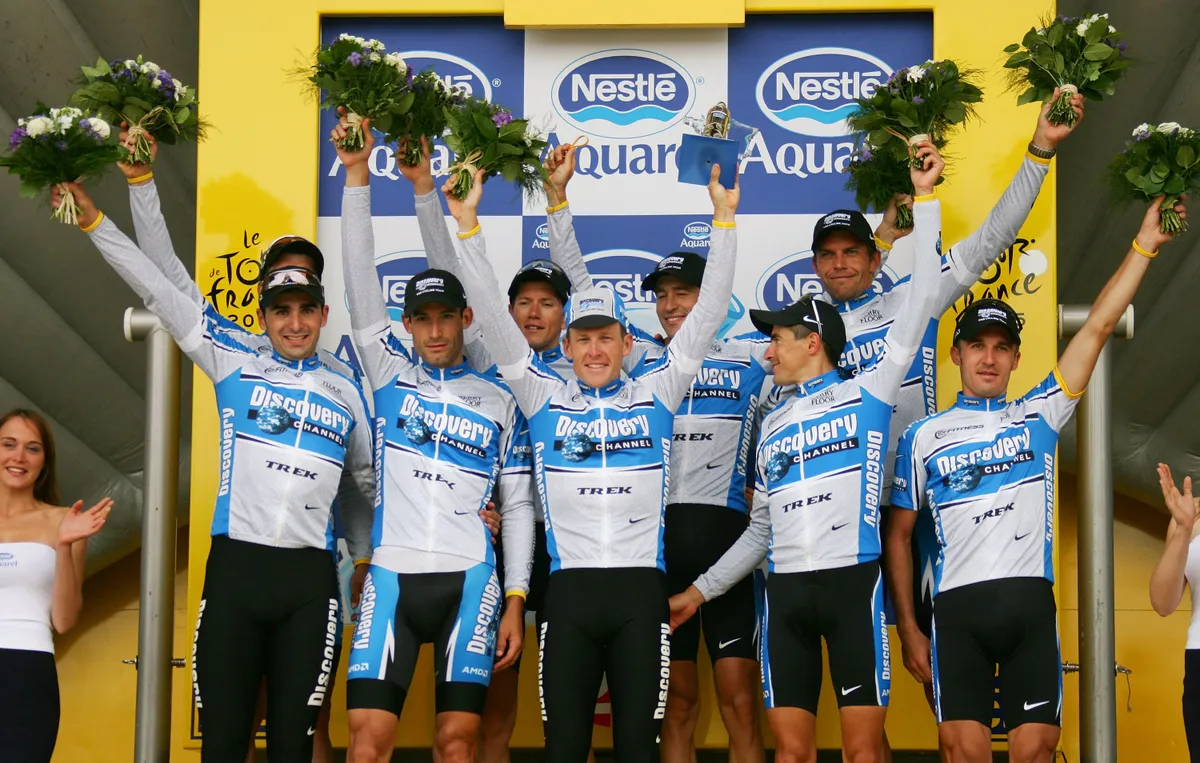
The Discovery Channel team after their 2005 Tour TTT
Expert advice
According to Brad McGee, directeur sportif at Team Saxo Bank and himself winner of the Tour de France prologue, “The most intense efforts a rider ever makes on their TT bike are on the front of a TTT. You’re pushing harder than in any TT.”
These displays of brute force are only made possible by the respite offered by the low-pressure (and hence less drag-inducing) slipstream that trails behind their team-mates. As each rider peels off the front and rejoins the back of the string they must use the reduced power output needed to follow the wheels to recover and ensure that their next turn in front is as intense as the first.
McGee describes the sensations as, “Like following a car – when you’ve got eight blokes in front of you you’re still pedalling but you can catch your breath.” Julich says that for Team Sky riders, “Once they are further than five positions from the front it is just as fast to sit up, breathe a little easier and benefit from the draft.”
Because all too soon they will move up the string, with resistance increasing slightly with each move forward until they arrive at third wheel, where power demands are around 65-70 percent of the demand on the front.
Once a rider is settled into second wheel, they’re working at around 75-85 per cent of their man ahead of them. As their team-mate swings off to the side and second-wheel becomes first, “The change in pace is a shock, the jump in effort feels bigger than you’d think,” says McGee. But no matter how brutal that change in effort is, each rider must deliver a perfect pull according to lessons learned from team pursuiting.
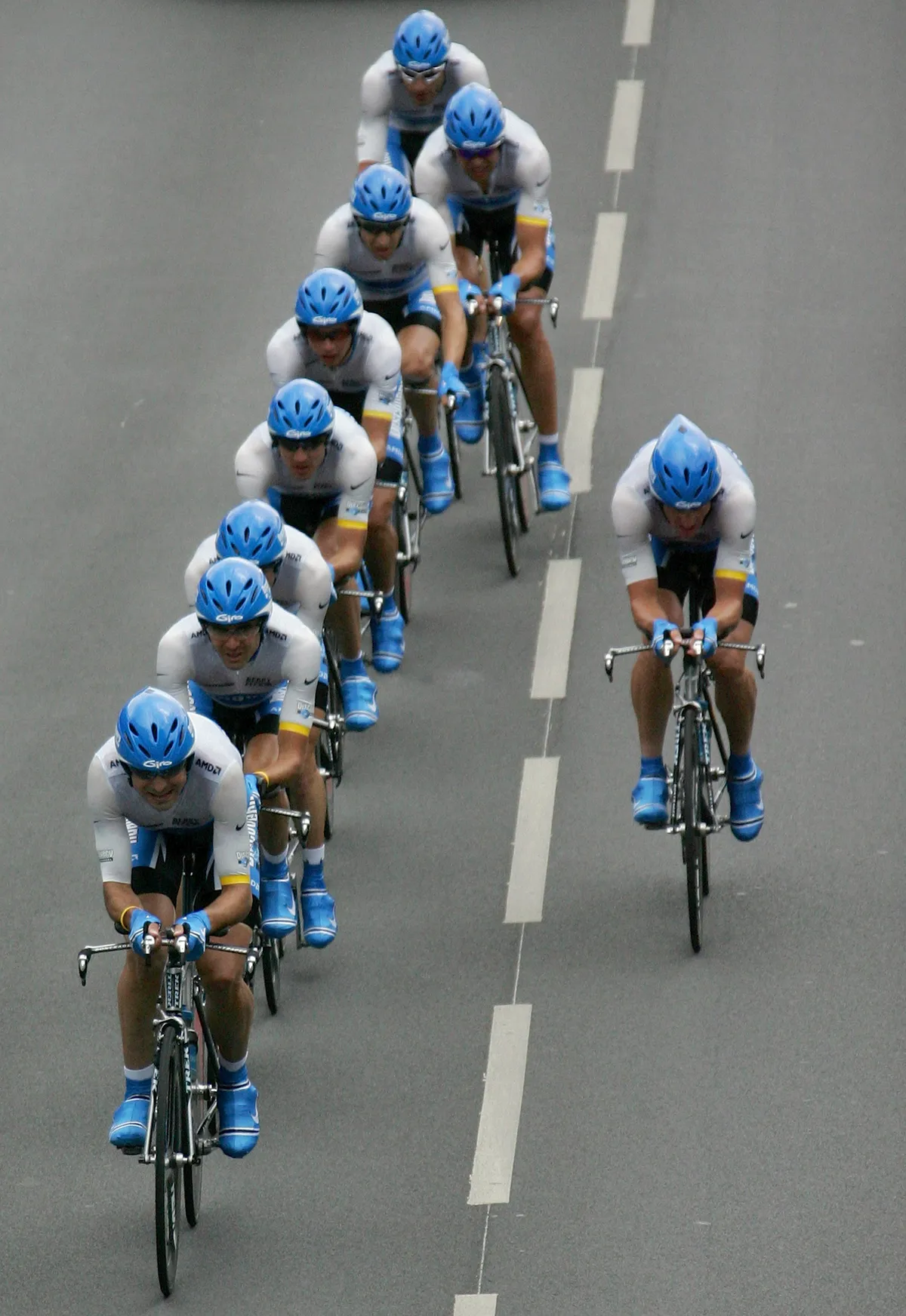
Lance Armstrong (right) falls back down a neat Discovery Channel line in the 2005 Tour
Secrets of success
So what makes the perfect pull? Everyone Procycling spoke to agreed that there are four key steps to being the perfect TTT engine. Riders should take the lead smoothly, maintain the speed, deliver the second man up to full speed and swing off cleanly.
The first two stages are meat and drink for pro riders, the difference between a pro TTT rider and the rest of us is in delivering the second man into the lead perfectly. Both Julich and McGee agree delivery is best achieved by surging during the final few pedal strokes of a pull to create a small acceleration which drops air pressure just behind the surging rider to help slingshot the second man onto the front and eases the impact of taking the wind.
“A clear signal that the turn is over is the final step,” says Julich. “If a rider can deliver on the key points then the length of turn is not an issue. The guys do what they can.” These details may seem trivial but, as Julich puts it, “We want to gain those fractions of a second at each turn, because over 60km they add up fast.”
Lead-out man
The track has also taught McGee to choose the right rider to bring his team up to speed: “You need a guy who can make a big effort to reach 50kph then recover. The team needs to trust him not to blow everyone’s legs in the first 500m too,” says McGee. Once at race pace, teams (Sky and Saxo Bank included) determine the length of turns on the front by one cardinal rule: The speed must not drop. Ever.
For the strong riders this means longer turns on the front, while those less able to hold the pace barely feel the wind on their faces before relinquishing their position to stronger team-mates.
Bobby Julich explains that, “Keeping the speed is really the reason for the guys on good form or TT specialists pulling for longer. Dragging the speed back up is tiring for the whole string, not just the guy on the front, so it’s better for the weaker guys to miss a turn or do a short pull than to let the speed fall.” McGee adds: “If you slow down then it is real easy to overreact and get into a yo-yo situation that kills the whole team.”
Even with directeurs keeping watch from the car and experienced riders giving guidance on the road, Julich tells us that, “There are always guys you know can’t hold the pace – we know the pace might drop by 1-2kph even though they’re giving it everything. We have to recognise that and find ways to limit the damage.
“We keep those weaker guys together, so once their turns are over we make sure we have a snappier rider like Peter Kennaugh, Cav or Ben Swift behind who can accelerate back up to speed quickly but smoothly without breaking the rhythm. Having a snappier guy to deliver the power line back up to speed means those guys can do their thing most effectively – so we hold maximum speed for longer”.
The ‘power line’ is the heart of Team Sky’s success. Julich explains: “It should be made up from guys about the same size, all on good form and, most importantly, who need to be familiar with each other and how they work together under different circumstances.” These riders are able to pull for 20-60 pedal revolutions each, holding the precious pace to provide several minutes of stable high-speed riding.
On flat sections of the course, this neat well-ordered process can run unhindered by the messy reality of the road. But when the parcours turns technical, riders must be comfortable with their team-mates and know how the team plans to attack every sort of obstacle without waiting for instructions from the car.
Decision making
Micro-managing rider position for particular portions of the route is virtually impossible, says McGee: “Once the boys have come through a few times you can forget your plans. You never know if one of the blokes is going to have a bad day. You just have to keep letting them know how everyone is doing from the car.”
McGee points out that from the following car the directeurs have far more insight into how the team as a whole is performing: “The riders are so focused on their line, their effort and holding the wheel that we are really involved in ensuring that the pace is right. We’ll decide whether we wait for a guy who has been dropped – we try to prevent that but when the elastic snaps we have to make that call.”
By contrast, Team Sky allow their highly experienced and meticulously drilled riders to dictate the pace on the road. Julich says, “In the pre-season the whole team is drilled in the best way to attack specific situations, like steep climbs or technical descents, so by the time race day comes, the directeurs just need to give a few refreshers of the strategy.”
Julich tries to keep riders calm by “reminding them that riding pace lines is what they do day-in, day-out. In a TTT, they just happen to be on their TT bikes.” On a technical course, a common understanding of team strategy and unity of purpose are the keys to a cohesive, fast ride. Whether this strategy comes from the car or is decided by the riders is a question best answered on the road.
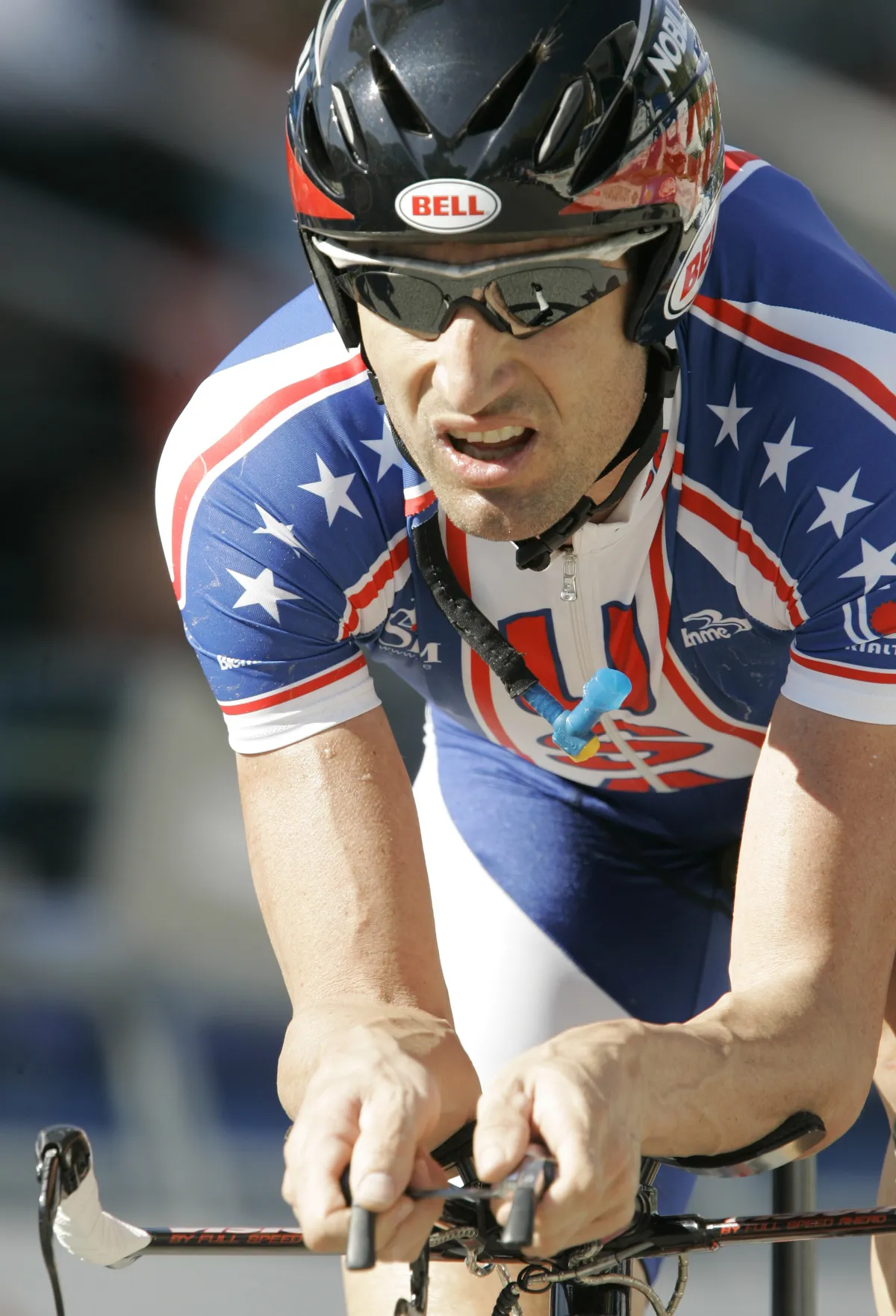
A former pro, Bobby Julich is now a race coach for Team Sky
Hours of drills and training can bind riders into a single speed-craving entity but the TTT adds the pressure of a combined fate for all nine men. That pressure can help some riders produce something extra or cause the best laid plans to falter. Stronger riders can force weaker team-mates into the red in their bid to meet expectations and teams can crack spectacularly.
McGee says that, for Saxo Bank, “Energy levels are already high enough. In fact, normally they’re too high. Everyone’s nervous.” Team Sky’s Bernie Eisel says that nerves are taut throughout the peloton: “Riders are talking about the TTT for days before the stage. Everyone is thinking and asking about it. It puts a lot of pressure on you.”
Under pressure
Tension and the struggle to match stronger colleagues is often the cause of nightmare TTTs, says Julich: “The experienced guys keep their heads, they know how to look after themselves. But you see nervous guys scrambling to hold the wheel, digging themselves a hole they’re not strong enough to get out of. It’s the nervous guys that you see getting dropped.”
For those unlucky souls, Eisel says, “The TTT can feel really long. It’s all about the team and if you get dropped, you’ll feel bad for the whole three weeks, even though I’ve never heard anyone complain that a rider didn’t give it 100 percent.”
There is a positive flipside to this urge to satisfy the team according to Eisel: “In an individual time trial I know I can’t win but in a TTT I’m sure the team can. With the guys I can just give it everything. Being able to do something for your team-mates means that guys like me can just hurt themselves more.”
The motivation and desire to live up to the expectations of team-mates can drive each rider to excel themselves and mean that the sum of their efforts is even greater than pure physics would predict.
As each team rolls down the wide ramp and onto the TTT parcours that opens the Vuelta a España, the technology, strategy and unity they possess will be held up high for the world to see. There will, as ever, be teams who suffer from a lack of preparation or ability, and these hapless few will add to the cycling lore of tragi-comic TTT performances.
While pure horsepower counts for a lot, the teams striving to understand, refine, drill and execute every area of this complex discipline will have been the ones who made their first day in Spain a winning one.
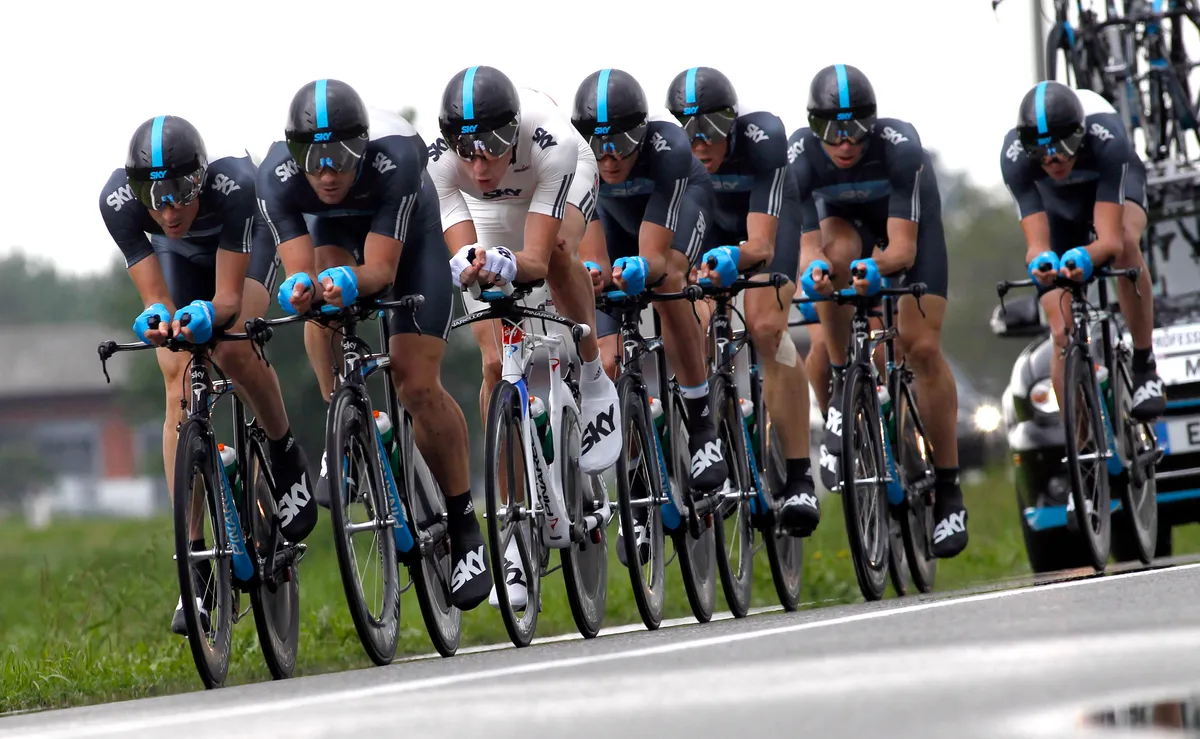
Team Sky during the Giro d'Italia TTT 2010
Small wheels, big advantage
Images of cycling’s techno-heyday show team pursuit riders huddled low over monocoque bicycles equipped with reduced diameter front wheels. These visored visions are benefiting from reduced aero drag as a direct result of their choice of wheel size. Not because smaller diameter wheels provide statistically significant aero advantage when riding alone (despite what a generation of triathletes were led to believe) but because they allow a well-drilled squad to ride closer together.
The reduced gap between riders that small front wheels allow means each rider can tuck themselves more completely into the low-pressure (and so less drag-inducing) draft which trails the rider in front. The very same advantage saw Moulton bicycles banned from bunch races by the UCI.
Day in the life of a team time trial
The morning of a team time trial begins in the same way as any other day of a stage race for Team Sky’s riders – breakfast, more breakfast and then a briefing of the plans for the day.
From there, Julich takes us through the routine: “The team rides the whole course together to open up the legs and see the route. The route reconnaissance really sets the mental scene for the team time trial. We know we need to keep them from riding too fast and with nine guys and their egos on the road that is a real challenge.”
With the course imprinted on the minds and legs of the team, the riders get a few hours’ rest before squeezing into their skinsuits and mounting their TT bikes for a group warm-up.
“We make sure that we have nine guys on nine turbo trainers at the same time. That really helps ensure that they all know that they’re part of a team. Each rider has slight variations but the basic warm-up routine is the same. It primes all the body’s energy systems.” From there the riders head to the start house mentally and physically prepared.
Check out this video of Garmin-Barracuda riders David Millar, Christian Vande Velde and Peter Stetina preparing for the Tour of Qatar 2012 TTT, which they went on to win:
Unable to load media
This article was originally published in Procycling magazine, available on Apple Newsstand and Zinio.
